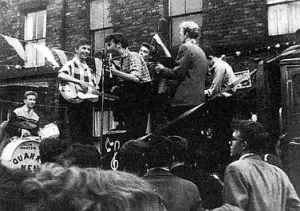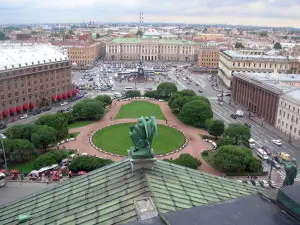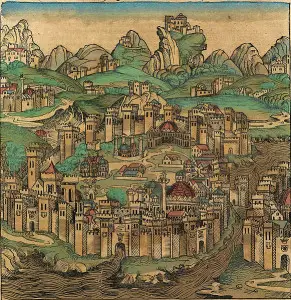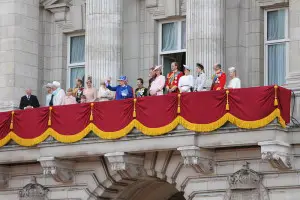People, products, businesses and even places change their names over time and guessing what is what and who is who can be a staple of general knowledge quizzes everywhere. People do it for professional reasons (because their original name is too mundane or clashes with somebody else), products do it to bring them into line with the global brand, businesses do it after mergers and places change names sometimes for political reasons. Here is a list of some of the most interesting name changes throughout history and the reasons for doing so.
1. St. James’ Park

The stadium has been the home of Newcastle United Football Club since their inception in 1892 when two previous clubs ‘ Newcastle West and Newcastle East ‘ merged. In the autumn of 2009, owner Mike Ashley renamed the stadium after the company he owns and it became the ‘Sports Direct Arena’ ‘ angering the fanbase in the process. It was only supposed to last a few months while Ashley rented out the name to other potential sponsors. Despite this still being the official name, the City Council overtly supported the fans in refusing to change the signage around Newcastle and Gateshead.
2.The Quarrymen

A little known band at the start of their career might go through a lot of changes such as their name, a band member or two or maybe even their record label and overall style and approach. This is what happened to this band through the 1950s. Starting off with John Lennon and a couple of school friends, some of the others moved on or were moved on leading to Paul McCartney and then later, George Harrison to join the band. The Quarrymen of course, became The Beatles and went on to global fame.
3. Marathon

The chocolate, caramel and nut confectionary bar known as Snickers was known by a different name in the UK and Ireland for many years: Marathon. Starting originally as a British product under that name, it was marketed throughout the rest of the world after the Mars’ family favourite horse. Once the brand went global, Mars decided to bring the UK operation into line with the rest of the world in 1990 so that fans of the bar wouldn’t get confused when buying it abroad. In a trade off, the British name Twix was adopted throughout the world when globally it had previously been called Raider – the British name seen as more memorable.
4. Cassius Clay

Clay was already a big-name boxer and was fighting under his birth name when he won his first world title in 1964, defeating Sonny Liston. Shortly afterwards, he converted from his Christian upbringing to Islam and became Muhammed Ali, dispensing with Cassius Clay as his ‘slave name’. Taking a vow of peace, he was stripped of his world title for refusing the draft to go to Vietnam. He later revoked his membership of the Nation of Islam and now considers himself a Sufi. He was recently voted Sports Personality of the Century by several authoritative organisations.
5. David Robert Jones

Having a mundane name is the bane of all musicians, especially for solo artists but when you share a name with a (then) much better known musician also on the rise (the lead singer of The Monkees), you could cause confusion. What better then, than to create something unique. The singer sought many options until he stumbled upon the name of a particular type of knife which was used for fighting and hunting. The singer became David Bowie and went on to worldwide fame.
6. St. Petersburg

Cities underwent name changes fairly regularly with massive regime changes. This is certainly true of Russia’s city of Culture. Though its modern name now has its original name of St. Petersburg, through the Communist era it underwent several changes first changing to Petrograd then Volgograd, then Leningrad and back to its original name in 1991 when the collapse of the Communist state finally came to an end. Wanting to recapture the tourism, tradition and art of Russia, the city still prides itself on being the culture capital of the country.
7. New Amsterdam

The era of colonial expansion in the Americas saw name regular changes of towns, cities and other settlements but none so cataclysmic as the first large city to be founded on the eastern seaboard. Originally named New Amsterdam by its Flemish settlers, the city was captured by English forces in 1664 and renamed ‘New York’ in honour of the Duke of York who had been in charge of the mission. It was located at the southern tip of what is now Manhattan Island
8. The Malvinas

A matter of dispute between successive British and Argentine governments, the islands which are just off the coast of South America are still a topic of conversation today. Discovered in 1690, they were given the name ‘Falkland Islands’ by the British explorer that discovered them. However, they were not officially named for another 100 years and the local Spanish inhabitants referred to them as ‘The Malvinas’, coined by the French explorer who re-discovered them. Colonisation and conflict has been at the centre of island life for 200 years.
9. Constantinople

Much confusion has plagued the inhabitants of the city the straddles two continents. Now in modern day Turkey and named Istanbul, the original city name was actually Byzantium. When Emperor Constantine I re-founded it as the first Christian city, he called it Nea Roma but the name Constantinople stuck. When the Roman Empire was divided in two, the city was named after its eastern half and renamed ‘Byzantium’. When it was conquered by the Ottomans in the 16th century, it was renamed ‘Istanbul’, itself a corruption of Islambol. The identity crisis ended in 1930 when all non-Turkish names (English, Latin and Arab) for the city became obsolete.
10. House of Saxe-Coburg

Determined to remove all final vestiges of its German ancestry during the era of World War I, King George V of England finally bowed to pressure of the masses throughout the empire and changed the name of the family to something suitably English ‘ The House of Windsor. Prior to this, the line had been considered part of the German Ducal House of the same name as descendants of Queen Victoria and her King Consort, Prince Albert. This was cemented with the end of both Russian and German royal lines the following year.
Conclusion
Name changes are sometimes for practical reasons and sometimes as political (or religious) statements about a change of attitude or direction. Many of the examples above fall under those categories: Cassius Clay changed his religion, New Amsterdam and the House of Saxe-Coburg did so for political reasons during or after a war and Mars did so for Marathon to bring the UK into line with the rest of the world.










Leave a Reply